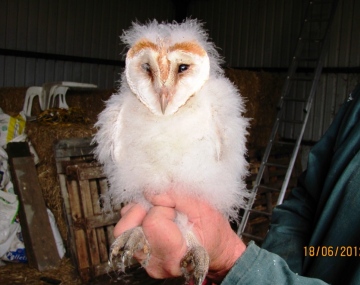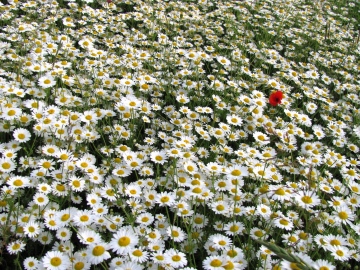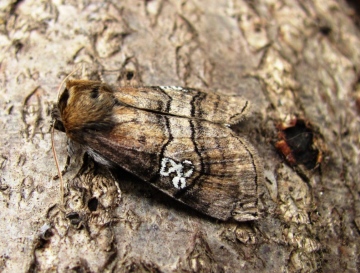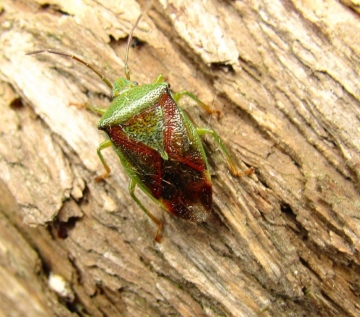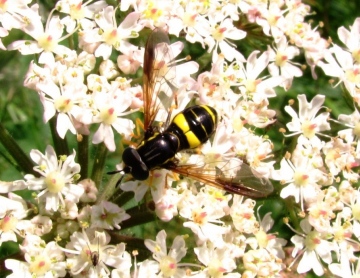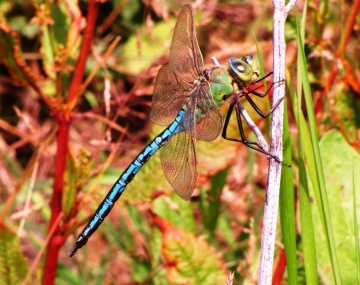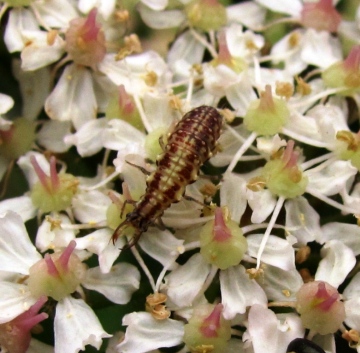Not all the news from Blue House is bad. Small birds such as Meadow Pipits, Skylarks and Reed Buntings have produced a great many young, their cause aided, perhaps, by the extraordinarily lush grass this spring, which has better shielded their nests from sharp eyed aerial predators such as harriers and crows. In addition, no less than three pairs of Barn owls are breeding in boxes on the reserve, all of which currently have young, including this one, which was one of three fledged from the box in the barn at the farm. There is obviously a thriving population of small mammals on the reserve, a tribute to Nick Robson and Tim Lawrence, who run the place, as when the EWT took over the farm twelve years ago all the fields had been grazed down to the knuckle by an overdose of sheep!
Butterflies have fared as badly as many birds. Compare these two sets of figures. Those in brackets denote the numbers seen during my weekly transect of the reserve on June 29th this year; those outside are those recorded on the same date in 2011.
Meadow Brown 1040 (86), Small/Essex Skipper 439 (0), Small Heath 154 (22), Small White 78 (0), Large Skipper 73 (2), Green-veined White 62 (0) and Common Blue 22 (0).
Rob Smith, the Butterfly Recorder, reckons that most species are three weeks behind schedule this year so numbers may pick up if the weather improves during July. One group of organisms that have benefited from the wet weather (apart from the slugs) are plants, the hayfields on the reserve bursting with leguminous colour, notably, thousands of Grass Vetchling and swathes of Common Vetch, Smooth and Hairy Tares, so thick on the ground that they trip you up. There are also fine displays of Knotted Clover and Knotted Bur Parsley on one of the counter walls. The shot below was taken in 2010 and is of Corn Chamomile in Nick's garden. He planted part of it with a wildflower mix a few years ago and this is the result.
I never expected to see such a spectacle in the wild in Essex but a few years ago an old pond on the edge of farmland at Fryerning was drained and ploughed, preparatory to it being incorporated into someone's garden. The following spring it was completely covered in Corn Chamomile - perhaps 1500 to 2000 plants in total - so perhaps fallow fields in the past really did look like this!
Summer appeared only briefly during this three week period, both 27th and 28th being hot and steamy. The moth trap in the garden suddenly came to life and produced catches well into double-figures for the the first time in many weeks, this Figure of Eighty being among the species caught. Another catch was this Birch Shield Bug, the third species I have trapped this year, the others being the Green and Hawthorn.
The 28th was spent wandering round Stow Maries aerodrome trying not to expire from the heat - but I stubbornly refused to moan about it! Even here on such a day the Hogweed test confirmed that it is a very poor summer for most insects. During a good one the flat white umbels play host to a multitude of nectar or pollen seeking bugs and flies but I struggled to find any insects to photograph this time. One that did oblige me was the distinctive hoverfly Chrysotoxum bisinctum, below. The Field Club database shows this to be fairly common and widespread in the county, particularly the south, but there are no records along the Crouch. However, the map may more clearly depict the distribution of hoverfly recorders rather than the hoverfly itself!
Another species that stayed still long enough for me to get a snap was this fine male Emperor Dragonfly.
A good day - one to recharge the batteries in preparation of the rain to come! Finally, another mystery insect, which I think may be a Lacewing larva. Considering that the adults are gentle, flimsy winged things it looks a bit fierce if it is!



















